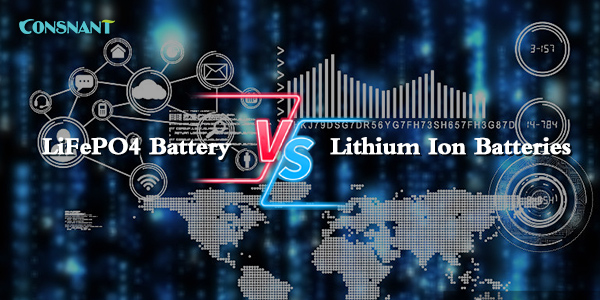 LiFePO4 Battery Vs Lithium Ion Battery
Dec 05, 2024
LiFePO4 Battery Vs Lithium Ion Battery
Dec 05, 2024
LiFePO4 Battery Vs Lithium Ion Battery : A Comparative Analysis
Introduction:
As the demand for efficient and reliable energy storage solutions continues to grow, two prominent contenders have emerged: LiFePO4 (Lithium Iron Phosphate) batteries and Lithium Ion batteries. In this article, we will delve into the key differences between these two battery technologies and explore their respective advantages in various applications.
What is LiFePO4 Battery?
LiFePO4 Battery also means LFP battery, which is a highly stable but slightly less energy dense battery composition. The iron and phosphate used to make the cathode are abundant and cheap than some of the materials used in NMC batteries – mainly cobalt. In addition, the materials in LiFePO4 batteries are far less toxic than those in NMC, making them easier to recycle at the end of their life.
Currently, more and more companies have been manufacturing LiFePO4 batteries as opposed to NMC for home energy storage. Mostly because LiFePO4 batteries are safer and more stable. In ELB, there are two model are popular in home energy storage system:
Home ESS SmartCube Series: 5-25KWhttps://www.consnant.com/home-energy-storage-system-10-25kw
LiFePO4 Summary Table
Voltages
3.20, 3.30V nominal; typical operating range 2.5–3.65V/cell
Specific energy (capacity)
90–120Wh/kg
Charge (C-rate)
1C typical, charges to 3.65V; 3h charge time typical
Discharge (C-rate)
1C, 25C on some cells; 40A pulse (2s); 2.50V cut-off (lower that 2V causes damage)
Cycle life
2000 and higher (related to depth of discharge, temperature)
Thermal runaway
270°C (518°F) Very safe battery even if fully charged
Cost
~$XXX per kWh
Applications
ESS, EVs, etc
LiFePO4 Battery:
LiFePO4 batteries offer several advantages that make them highly sought-after in the energy storage industry. Some key features include:
- Safety: LiFePO4 batteries are inherently stable and exhibit excellent thermal stability, making them resistant to thermal runaway, explosion, or fire risks. This safety aspect has positioned LiFePO4 batteries as a preferred choice in applications where safety is paramount.
- Longevity: LiFePO4 batteries boast an impressive lifespan, with a typical cycle life of over 2,000 cycles. This extended lifespan ensures a longer service life, resulting in reduced replacement and maintenance costs.
High Discharge Rates: LiFePO4 batteries can deliver high discharge currents, making them ideal for applications that require a burst of power or high current draw. They are commonly used in applications such as electric vehicles (EVs) and renewable energy systems.
What is Lithium ion battery?
The most widely cited Lithium ion battery is the ternary battery, we also call it as NMC battery also means NiCoMn ternary battery. Which is a very high specific energy or power battery. This limitation of “energy” or “power” makes them more commonly used in power tools or electric cars.
NMC lithium ion batteries typically have a lower upfront cost but may need to be replaced over the lifetime of the vessel depending on the operational profile.
NMC Lithium Ion Battery Summary Table
Voltages
3.60V, 3.70V nominal; typical operating range 3.0–4.2V/cell, or higher
Specific energy (capacity)
150–220Wh/kg
Charge (C-rate)
0.7–1C, charges to 4.20V, some go to 4.30V; 3h charge typical. Charge current above 1C shortens battery life.
Discharge (C-rate)
1C; 2C possible on some cells; 2.50V cut-off
Cycle life
1000–2000 (related to depth of discharge, temperature)
Thermal runaway
210°C (410°F) typical. High charge promotes thermal runaway
Cost
~$XXX per kWh
Applications
E-bikes, medical devices, EVs, industrial
Lithium Ion Batteries:
Lithium Ion batteries are well-known for their energy density and versatility. Here are some notable advantages of Lithium Ion batteries:
- Energy Density: Lithium Ion batteries offer a higher energy density compared to LiFePO4 batteries, allowing for more energy storage in a smaller and lighter package. This advantage makes Lithium Ion batteries suitable for portable devices, such as smartphones and laptops.
- Voltage Range: Lithium Ion batteries have a wider voltage range, enabling them to deliver a more consistent voltage output throughout most of their discharge cycle. This voltage stability is crucial in applications where a constant power supply is required, such as electric grids and uninterruptible power supply (UPS) systems.
Performance: Lithium Ion batteries exhibit excellent efficiency and have a lower self-discharge rate than LiFePO4 batteries. They also provide a higher charging efficiency, allowing for faster recharging times.
Which is the best? LiFePO4 battery vs Lithium Ion Battery?
Performance
Overall, the overall performance of Lithium ion cell and LiFePO4 cells is almost the same. You can find these two types in a variety of sizes, from as little as 0.5 kWh to over 100 kWh. Most homeowners only need about 10 kWh of storage, and you can definitely find it from both types.
That being said, there are some subtle differences between the two. Compared to Lithium ion battery, LiFePO4 battery are slightly more efficient and operate better at lower states of charge, but NMCs can tolerate cooler temperatures better. However, if your battery is installed inside, or if you’re in an area that doesn’t experience significant temperature extremes, you probably don’t need to worry about this.
Lithium ion batteries also have higher energy density, which means they will be physically smaller than LiFePO4 batteries of the same capacity. This is usually not a concern for homeowners, but if you have limited space then you may want to consider Lithium ion batteries.
Lifespan
Generally speaking, the cycle life of LiFePO4 battery is more than 6000 times, while the life of ternary lithium ion battery is generally 800-1000 times.
Safety
One of the biggest benefits of choosing an LiFePO4 battery is its safety and lifespan. The combination of lithium iron phosphate is more stable than nickel manganese cobalt at higher temperatures.
Additionally, LiFePO4 batteries can better handle greater power consumption. Therefore, LiFePO4 cells are less likely to experience thermal runaway. In short, LiFePO4 batteries are less likely to catch fire than lithium ion batteries.
This is not to say that if you install an lithium ion battery, it will spontaneously ignite. However, if the lithium ion battery is overstressed or mishandled, there is a higher chance of problems. That’s why it’s important to use a licensed, trusted battery installer to minimize the chance of problems.
Upfront Cost
lithium ion batteries tend to be a little more expensive than LiFePO4 batteries.
Also, the LiFePO4 battery is slightly larger, and the cabinet housing the LiFePO4 battery may also require more material.
Value
We’re just saying that lithium ion batteries have a lower upfront cost. However, LiFePO4 batteries can give you great value for money.
According to the price of each cycle life, the price per cycle of LFP Battery is only 1/3 of the price per cycle of lithium ion battery basically.
Charge-Discharge Curve
Let’s compare the charge-discharge curves of LiFepo4 Battery Vs Lithium Ion batteries:
The state of charge (SOC) of an lithium ion battery varies significantly by its voltage level.
On the other hand, the SOC level of lithium iron phosphate batteries, due to its flat charge-discharge curve, is not easy to distinguish by voltage level.
Therefore, accurate SOC diagnosis of lithium ion batteries is possible, while SOC accuracy of LiFePO4 batteries is very challenging.
How To Choice The Right One For You?
Commercially, the initial capital expenditure for LiFePO4 cells is generally cheaper than for NMC lithium cells. LiFePO4 batteries are about 20-30% cheaper per kWh, but system integration costs tend to be only about 5-15% cheaper at the beginning of the overall system life cycle.
Operationally, we like the LiFePO4 batteries more relaxed operating conditions – a wider temperature range than NMC, and does not require refrigerated containers for shipping. In addition, LiFePO4 battery products generally support up to 1C operation, while Lithium ion battery must use power batteries, 2H or 4H different batteries use batteries, support 1C rate (1 hour) applications, and the cost is high.
We believe it is important that customer and investor awareness of Lithium ion batteries and companies remains high. But leading lithium iron phosphate batteries and companies have been catching up. Once a product is approved, customers can often easily adopt the same company’s new platform.
Where you can find the best LiFePO4 battery and Lithium ion battery?
CONSNANT manufactures both LiFePO4 Battery and Lithium ion battery which adopts latest technology. So when trying to decide which battery to purchase consider a few things.
1. What application are you using the battery for?
2. What is the discharge/discharge current of the batteries?
3. The size limitation of the battery space?
4. Energy density will be high or low?
When considering battery technology for a particular application, it is essential to assess the specific requirements and prioritize factors such as safety, energy density, lifespan, and discharge rates. By understanding these differences, consumers and businesses can make informed decisions to meet their energy storage effectively.
Once you have the answers to these questions CONSNANT will help you to determine the best battery for you. Let us know your opinion about the above topic. Any question, welcome to contact with us!

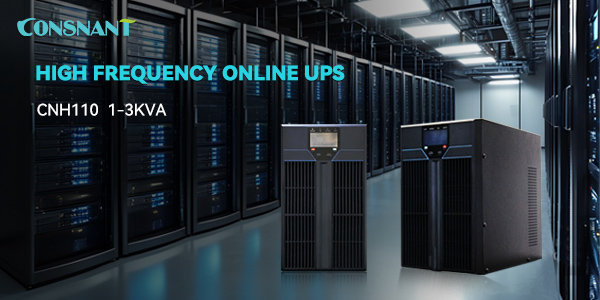 Hot-selling products: High Frequency Online UPS
Mar 07, 2025
Hot-selling products: High Frequency Online UPS
Mar 07, 2025
 Hot Products:Low Frequency Online UPS
Feb 27, 2025
Hot Products:Low Frequency Online UPS
Feb 27, 2025
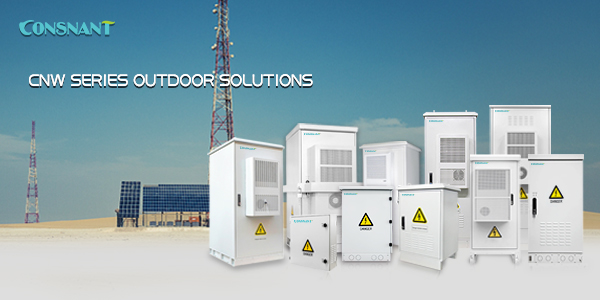 CNW Series Outdoor Power Solutions
Jan 03, 2025
CNW Series Outdoor Power Solutions
Jan 03, 2025
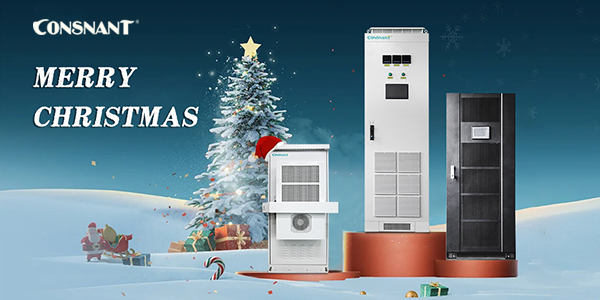 CONSNANT : Wishing Everyone a Merry Christmas!
Dec 24, 2024
CONSNANT : Wishing Everyone a Merry Christmas!
Dec 24, 2024
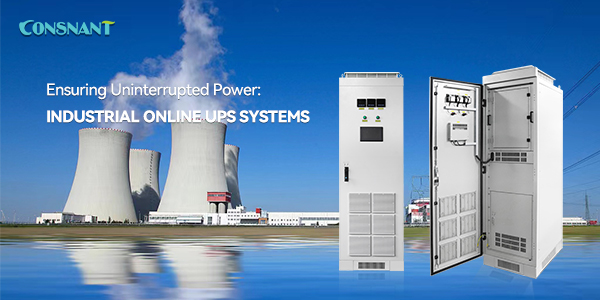 Ensuring Uninterrupted Power: Industrial Online UPS Systems
Dec 21, 2024
Ensuring Uninterrupted Power: Industrial Online UPS Systems
Dec 21, 2024
 LiFePO4 Battery Vs Lithium Ion Battery
Dec 05, 2024
LiFePO4 Battery Vs Lithium Ion Battery
Dec 05, 2024
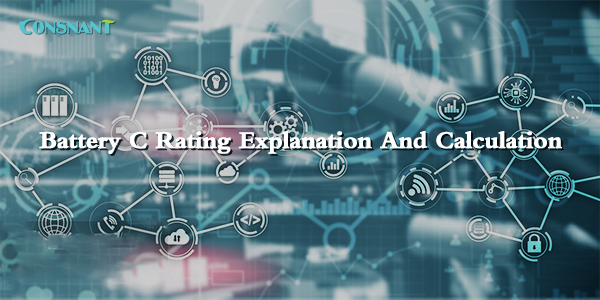 Battery C Rating Explanation And Calculation
Nov 07, 2024
Battery C Rating Explanation And Calculation
Nov 07, 2024
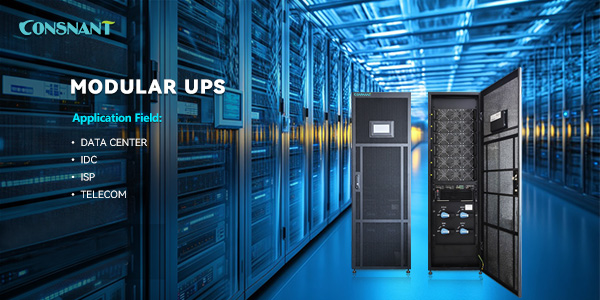 Modular Online UPS Application in Data Center
Oct 28, 2024
Modular Online UPS Application in Data Center
Oct 28, 2024
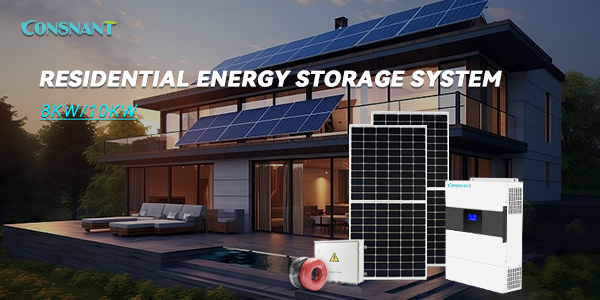 Residential Energy Storage System
Sep 04, 2024
Residential Energy Storage System
Sep 04, 2024
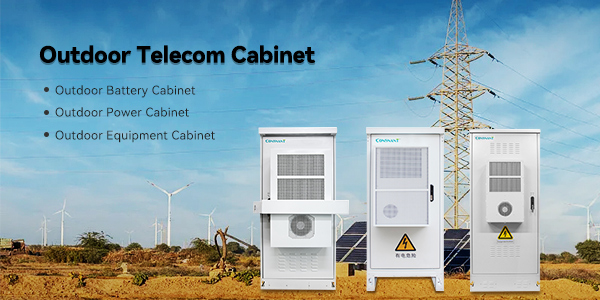 Advantages of CONSNAN Outdoor Telecom Cabinet
Aug 23, 2024
Advantages of CONSNAN Outdoor Telecom Cabinet
Aug 23, 2024
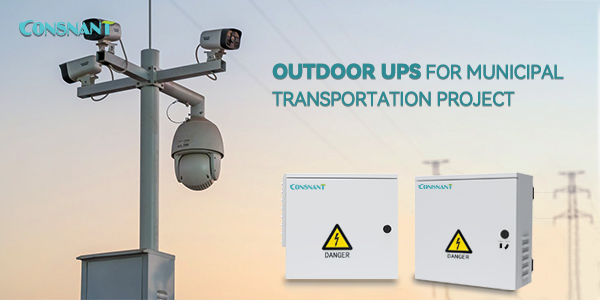 Outdoor UPS for Municipal Transportation Project
Jul 22, 2024
Outdoor UPS for Municipal Transportation Project
Jul 22, 2024
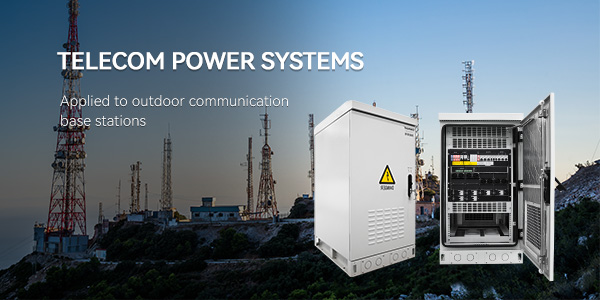 Telecom Power Systems:Applied to Outdoor Communication Base Stations
Jun 28, 2024
Telecom Power Systems:Applied to Outdoor Communication Base Stations
Jun 28, 2024